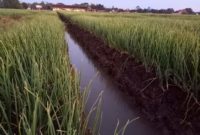What are the advantages and disadvantages of Lateral Move Irrigation System?
The advantages/pros are:
1. Precise application:
The systems are able to apply a prescribed volume of water to match crop water requirements. It reduces the opportunity for surface runoff or deep percolation if the system is designed to match soil infiltration characteristics.
2. Reduced variability:
The reported application efficiencies for new well designed machines are generally in the 80-95% range, compared to 50-90% for surface irrigation systems.
3. Lower labour requirements:
Labour requirements are generally lower than surface irrigation but depends on the system and\ or the degree of automation of the machine.
4. Opportunities for fertigation:
Fertigation allows the targeted application of small quantities of nutrients, with a reasonable uniformity of application and less risk of nutrient losses. The irrigation system may also be used to apply herbicides and pesticides.
5. Less landforming:
The system can work on rolling topography. However, there might be a need for some landforming for surface drainage or rainfall induced runoff.

The disadvantages/cons are:
1. Cost:
The systems have a relatively high capital cost compared to surface irrigation systems, unless substantial landforming is required for optimum performance of the surface system. The running costs can also be significant and need to be evaluated during the design process.
2. Energy requirements:
These systems require some form of energy source (electric or diesel) to operate.
3. Water quality:
Water may need to be filtered before use to prevent system blockages with sediments. Poor water quality can affect longevity of irrigation infrastructure.
4. One disadvantage of center lateral move irrigation system is that a circular field leaves a lot of unused space.
5. Skill requirement:
Operation and maintenance of these systems will require different skills to those required for surface irrigation systems.
